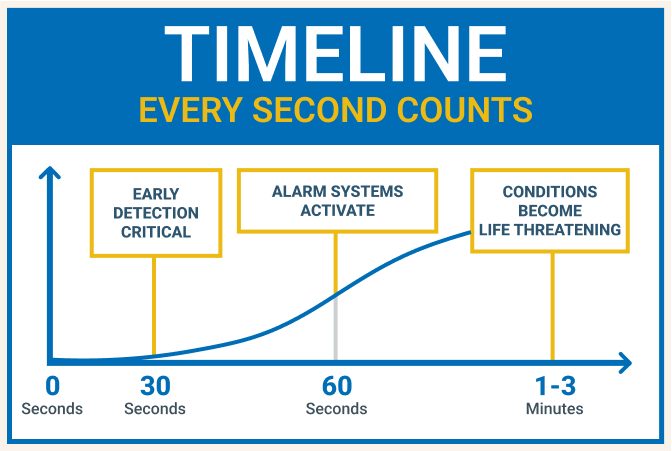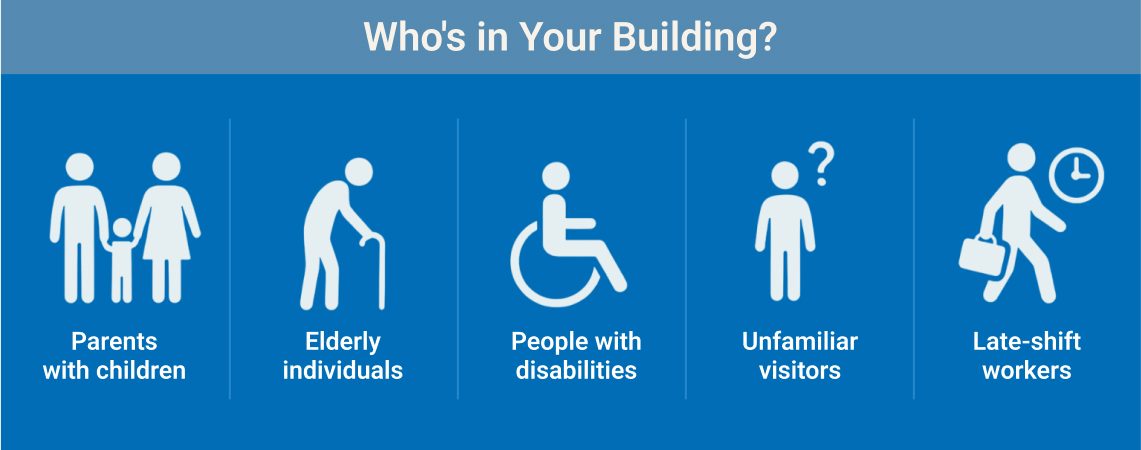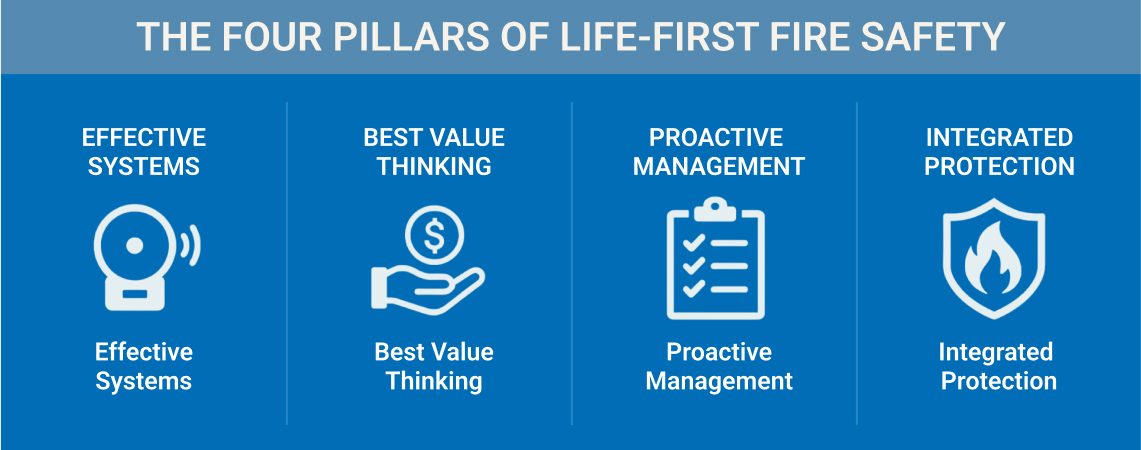In boardrooms across the country, the same conversation plays out repeatedly: “What’s the cheapest way to meet fire safety requirements?” This question, while understandable from a business perspective, reveals a fundamental misunderstanding of what fire safety systems are truly designed to accomplish. When building owners view fire protection as merely a compliance cost rather than essential life safety infrastructure, they create dangerous gaps that could prove catastrophic when seconds matter most.

Meeting fire codes is important, but it represents the absolute floor—not the ceiling—of what responsible building management should entail. When owners shop solely on price for fire safety solutions, they often end up with systems that technically satisfy regulatory requirements but may fail when faced with real-world emergencies.
Consider the difference between a basic smoke detector that barely meets specifications and a high-quality system with advanced sensors, backup power, and integrated communication capabilities. Both might pass an inspection, but only one provides the rapid detection and reliable operation that saves lives when visibility drops to zero and every second counts.

This compliance-first approach creates several critical vulnerabilities:
Fire safety systems aren’t abstract regulatory requirements—they’re the last line of defense for real people in your building. Every day, your facility hosts individuals with varying levels of mobility, familiarity with the space, and ability to respond quickly to emergencies:
– Parents carrying young children who need extra time to evacuate safely
– Elderly visitors or employees with limited mobility who depend on clear egress routes
– People unfamiliar with the building layout who rely on clear signage and alarm systems
– Employees working late shifts when fewer people are around to assist others
– Individuals with hearing or vision impairments who need multi-sensory alert systems
When building owners cut corners on fire safety, they’re not just risking regulatory fines—they’re gambling with the lives of every person who enters their facility.

The “cheapest” fire safety solution often proves to be the most expensive in the long run. Beyond the obvious moral imperative to protect human life, inadequate fire safety systems expose building owners to:
– Massive liability exposure in the event of injuries or fatalities
– Property damage that could have been prevented or minimized
– Business interruption costs from extended closures
– Insurance claim disputes and potential policy cancellations
– Legal fees and settlement costs from negligence lawsuits
– Evacuation delays that put more people at risk
– System failures that leave occupants without critical safety information
– Poor emergency response coordination due to inadequate communication systems
– Damage to reputation and tenant confidence

The most successful building owners have moved beyond compliance thinking to embrace a life-first approach to fire safety. This mindset shift involves several key changes
Instead of seeking minimum compliance, focus on systems that provide maximum protection for the specific risks and occupancy patterns in your building.
Consider the total cost of ownership, including reliability, maintenance requirements, and performance under stress—not just the initial purchase price.
Implement regular testing, maintenance, and system updates that ensure peak performance when it matters most.
Design fire safety as a comprehensive system where detection, suppression, communication, and egress work together seamlessly.

Transforming fire safety from a compliance burden into a core operational priority requires leadership commitment and clear communication throughout the organization. This means:
– Educating staff about fire safety systems and their proper use
– Conducting regular drills that test both systems and human responses
– Investing in quality equipment and professional installation
– Maintaining detailed records and conducting proactive maintenance
– Staying informed about advances in fire safety technology and best practices
Fire safety isn’t a cost center—it’s an investment in the most valuable asset any building can protect: human life. When building owners shift from compliance thinking to life-first decision-making, they often discover that the incremental cost difference between adequate and excellent fire protection is minimal compared to the peace of mind and genuine security it provides.
Every person who enters your building trusts that you’ve taken reasonable steps to protect their safety. That trust deserves more than the minimum effort required by law—it deserves systems designed and maintained with the understanding that in an emergency, there are no second chances.
The question isn’t whether you can afford to invest in proper fire safety. The question is whether you can afford not to. When lives are on the line, compliance isn’t enough. Excellence should be the only standard that matters.
To know more about NFire IoT based Wireless Fire Alarm System
© 2025 NFire, All Rights Reserved